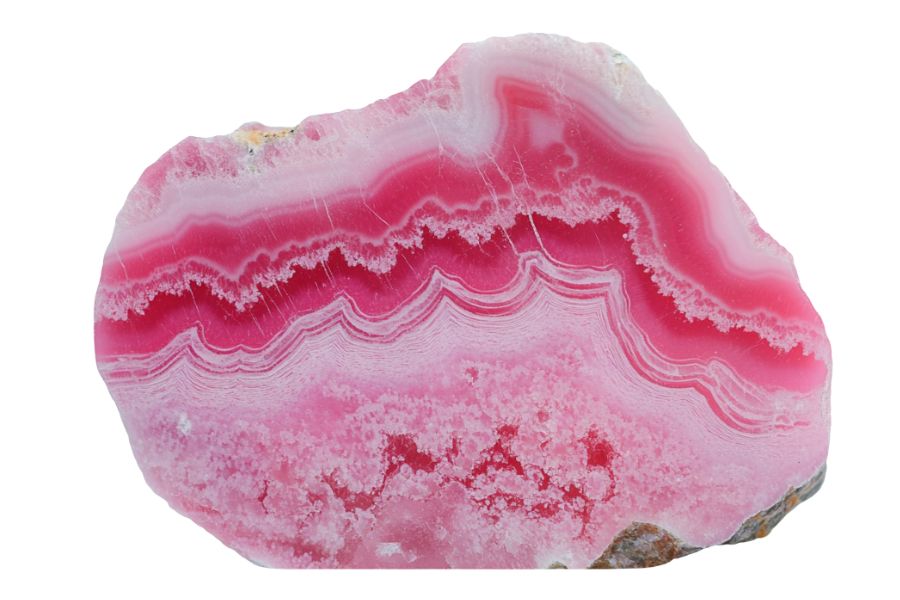Finding rhodochrosite in Illinois takes time and patience. You might spend hours walking through fields and creeks with nothing to show for it. The sun beats down on your back while dust sticks to your sweaty skin. But when you spot that pink mineral gleaming in the dirt, all that discomfort fades away.
Illinois has some good spots where rhodochrosite hides. These pink stones nestle between other rocks and minerals, waiting for sharp eyes to spot them. They form over thousands of years in very specific places where the right conditions come together.
The thrill of finding your first piece makes the search worth it. Each rhodochrosite has its own pattern and shade of pink. Some collectors travel hundreds of miles for a chance to add these stones to their collection.
We’ll show you where locals go when they want to find these beautiful pink minerals without wasting time in empty areas.
How Rhodochrosite Forms Here
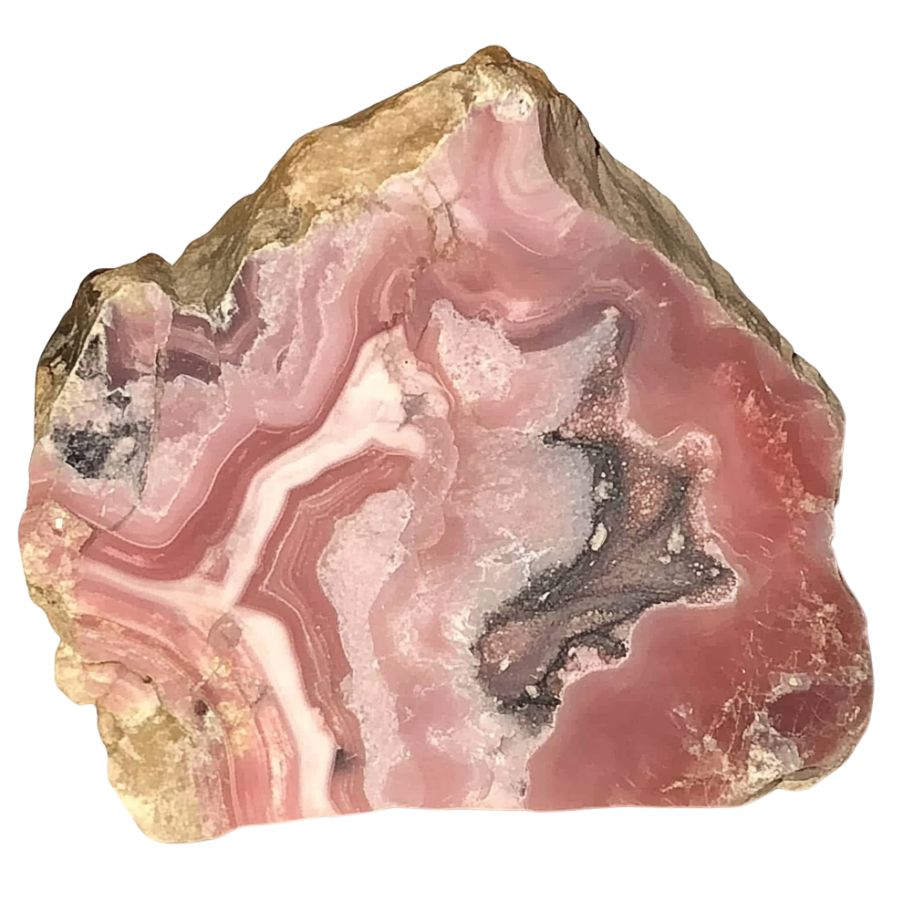
Rhodochrosite forms from manganese-rich waters seeping through cracks in rocks. When these mineral-heavy solutions mix with carbonate materials (like limestone), the magic happens!
Over time, as temperatures and pressures change deep underground, the manganese and carbonate ions come together and slowly crystallize. Sometimes, it forms in beautiful stalactites in empty spaces in rocks, while other times it shows up in hydrothermal veins alongside other minerals.
The most stunning specimens often form when the conditions are just right (not too hot, not too cold) letting the crystals grow slowly into those gorgeous pink rhombohedral shapes we love so much.
Types of Rhodochrosite
Rhodochrosite occurs in several distinct varieties. From delicate pink bands to deep crimson crystals, these variations showcase the diverse beauty of this remarkable mineral.
Pink Rhodochrosite
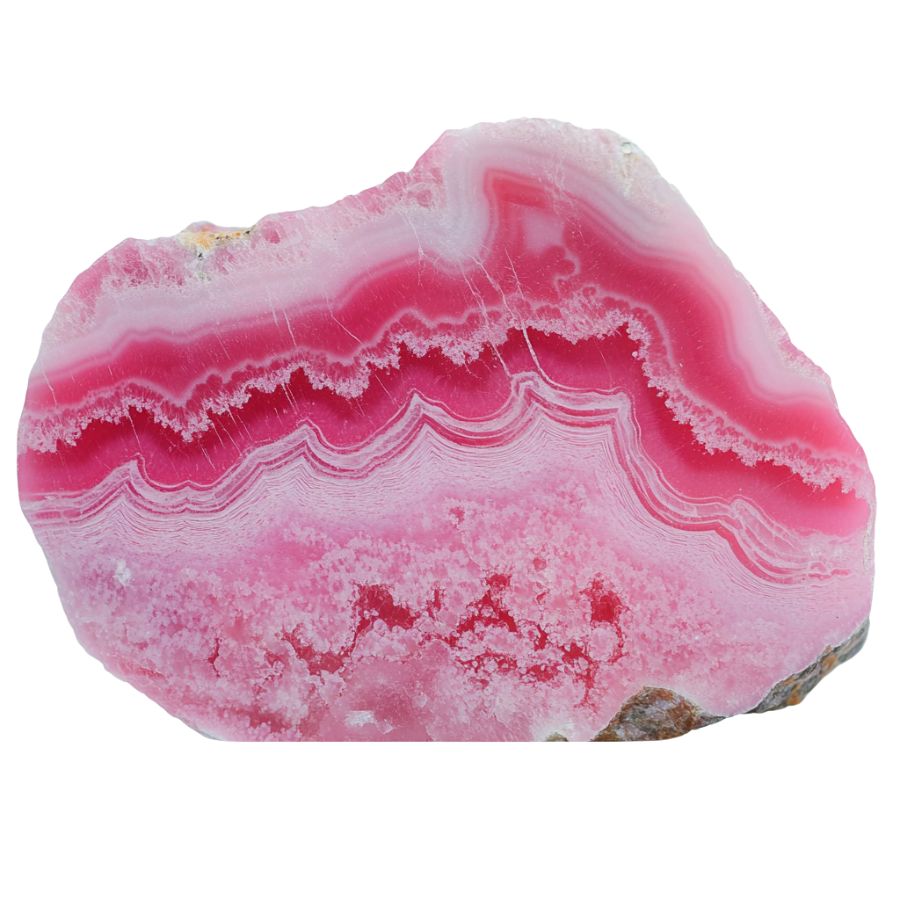
Pink Rhodochrosite displays delicate pink shades that range from soft pastel to deep rose pink. The stone features beautiful banding patterns that create swirling designs throughout its surface.
The translucent to semi-translucent nature of Pink Rhodochrosite adds to its visual appeal. This stone has a special trigonal crystal system that sometimes produces rare transparent crystals.
Fine specimens with clear, transparent crystals are particularly valuable. The best examples show sharp color zones and distinct banding patterns. Stone’s intricate patterns often resemble landscapes or abstract art.
Red Rhodochrosite
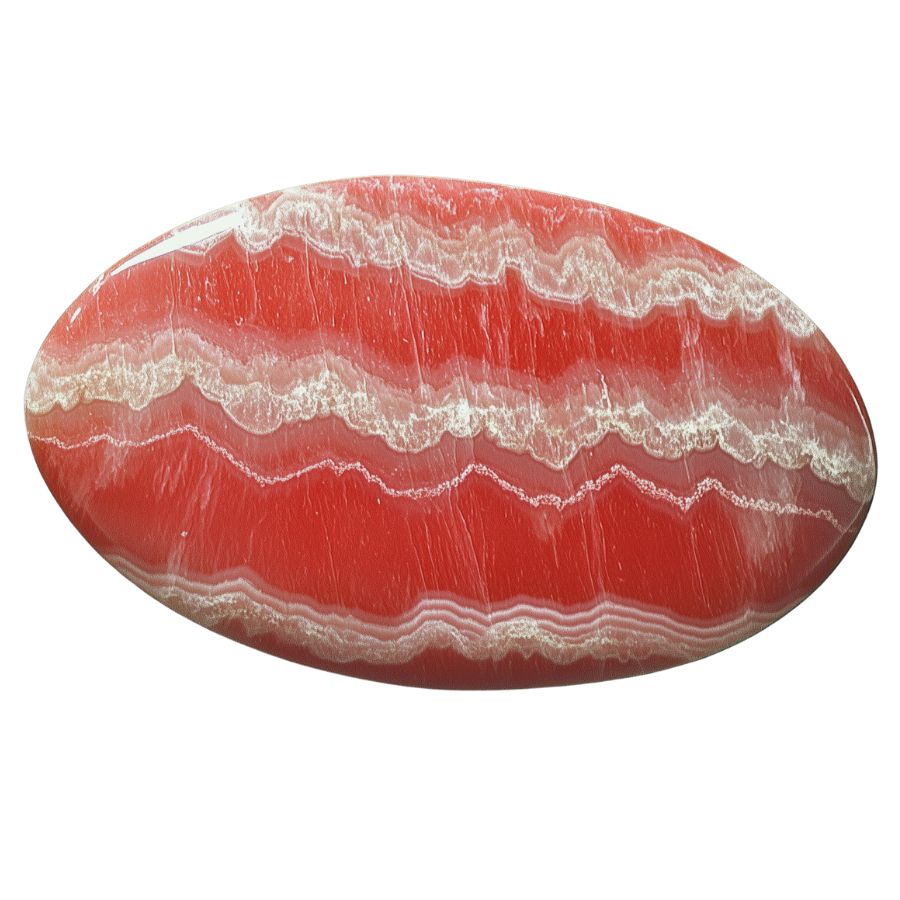
Red Rhodochrosite stands out with its bold, vibrant colors that range from bright red to deep crimson. Its intense red coloring comes from its high manganese content.
This variety can form in interesting shapes, including rhombohedral crystals and stalactite formations. When cut and polished, these formations reveal stunning internal patterns.
The crystal structure of Red Rhodochrosite allows it to form in large, well-defined specimens. These pieces often show sharp color transitions and clear crystal faces. The surface has a bright, glass-like shine when polished.
Some specimens feature dramatic color zoning, where deeper reds blend into lighter shades. This natural gradient effect makes each piece distinct and visually interesting.
Trapiche-like Rhodochrosite
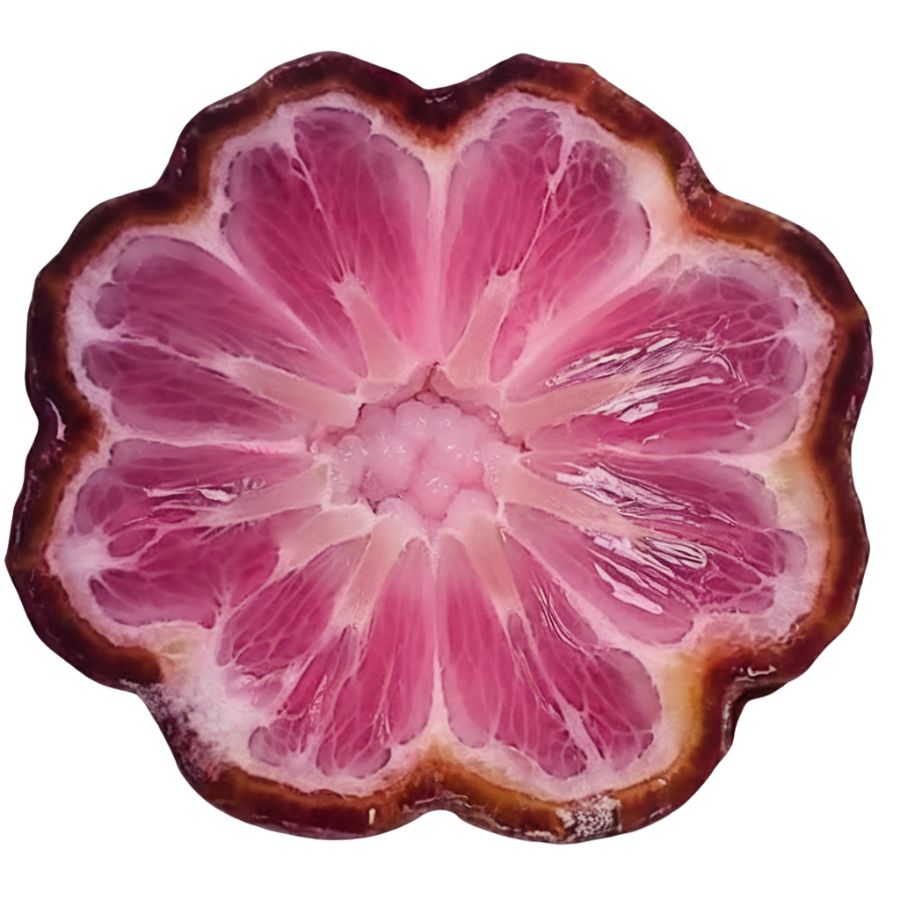
Trapiche-like Rhodochrosite showcases a remarkable star or flower-like pattern that makes it truly special. This pattern forms when crystals grow in a specific way, creating symmetrical rays that extend from the center. The result looks like a wheel with spokes or a blooming flower.
The formation process creates distinct sections within the crystal, each with its own character. These sections join at the center point, creating a natural geometric design.
When the stone is cut perpendicular to its main growth axis, its visual effect is enhanced. This orientation reveals the full beauty of the pattern and shows how the crystal sections fit together perfectly.
South African Rhodochrosite
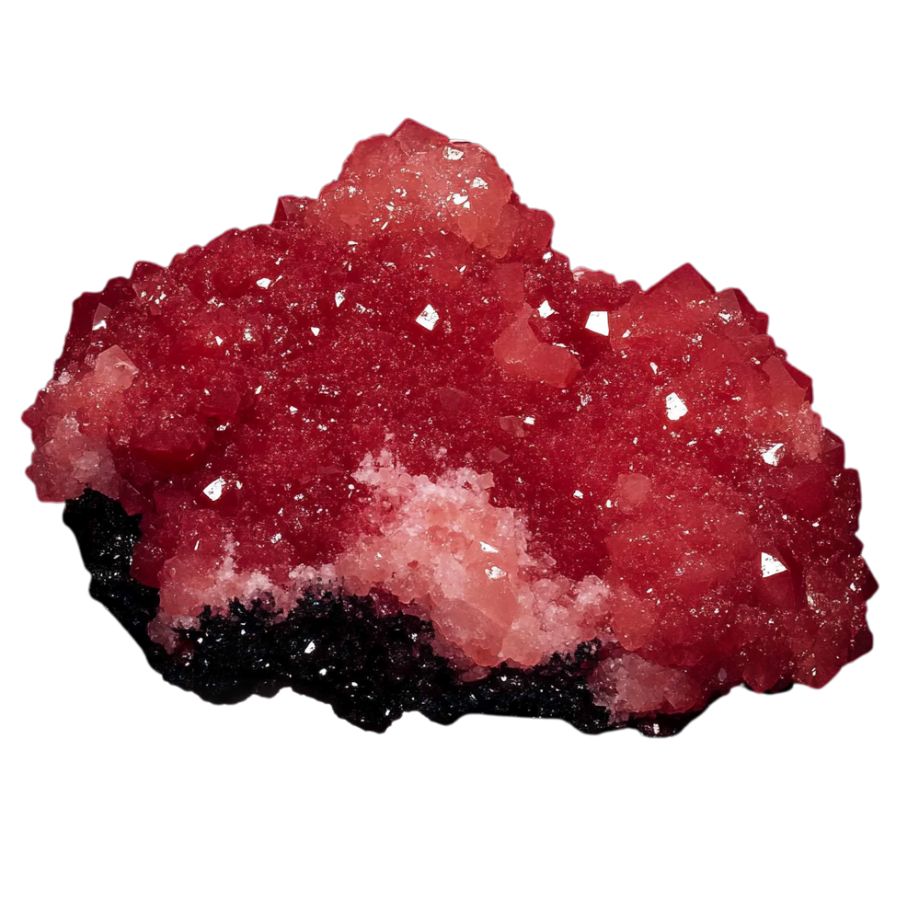
South African Rhodochrosite is known for its deep, rich blood-red color. This intense coloring sets it apart from other varieties. The stone often shows excellent clarity and depth of color which makes it particularly striking.
The internal structure of this variety creates interesting optical effects. When light passes through the stone, it can create a subtle glow that enhances its natural beauty. The crystal structure allows for excellent polish, bringing out the stone’s natural luster.
Many specimens show distinctive growth patterns that form during crystallization. These patterns can create interesting visual effects, from subtle color variations to dramatic geometric designs. The combination of deep color and natural patterning makes each piece unique.
Argentine Rhodochrosite
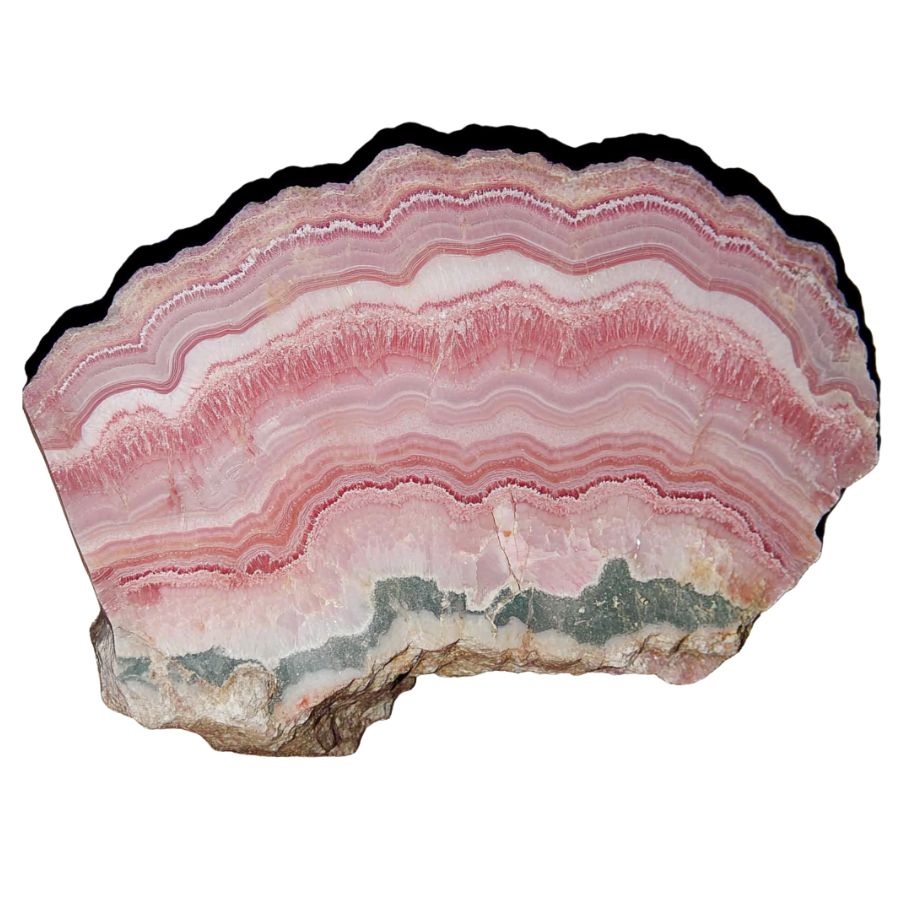
Natural bands of pink and white create stunning patterns across this remarkable stone. Delicate layering resembles fine marble artwork, making each piece unique. The colors shift between pale pink and deep red tones.
Historic significance adds to its charm as the “Inca Rose.” Ancient civilizations treasured these stones for their exceptional beauty. Many specimens show perfect crystal formations that catch and reflect light beautifully.
Exceptional purity sets Argentine specimens apart from others. Crystal formations often grow in perfect rhombohedral shapes. Traditional cutting methods reveal intricate internal patterns that collectors prize.
Colorado Red Rhodochrosite

Brilliant rose-red colors distinguish this remarkable variety. Transparent specimens showcase exceptional clarity and fire. Natural light brings out deep crimson undertones that seem to glow from within.
Outstanding crystallization creates sharp, well-defined faces. Remarkable internal structures form during slow growth periods.
Superior brilliance makes these stones stand out in collections. Natural light reveals complex internal reflections. Fresh specimens maintain their vivid coloring over time. Special cutting techniques enhance the stone’s natural beauty.
Banded Rhodochrosite
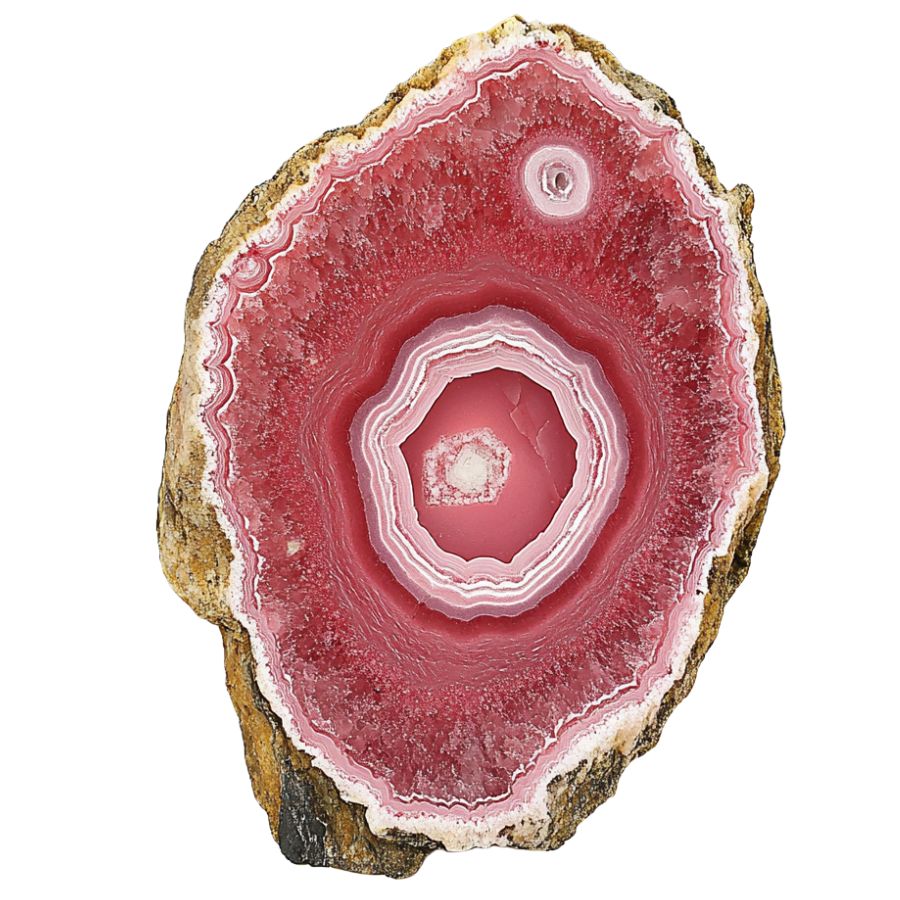
Concentric circles create fascinating patterns throughout this stone. Dramatic bands alternate between light and dark pink shades. Nature’s artistry reveals itself in each cross-section.
Perfect specimens form when mineral-rich water drips slowly over time. Natural processes create stalactite formations with distinct ring patterns.
Multiple layers build up over time to create unique patterns. Natural variation ensures no two pieces look exactly alike. Perfect cross-sections show complete circular patterns.
Peruvian Rhodochrosite
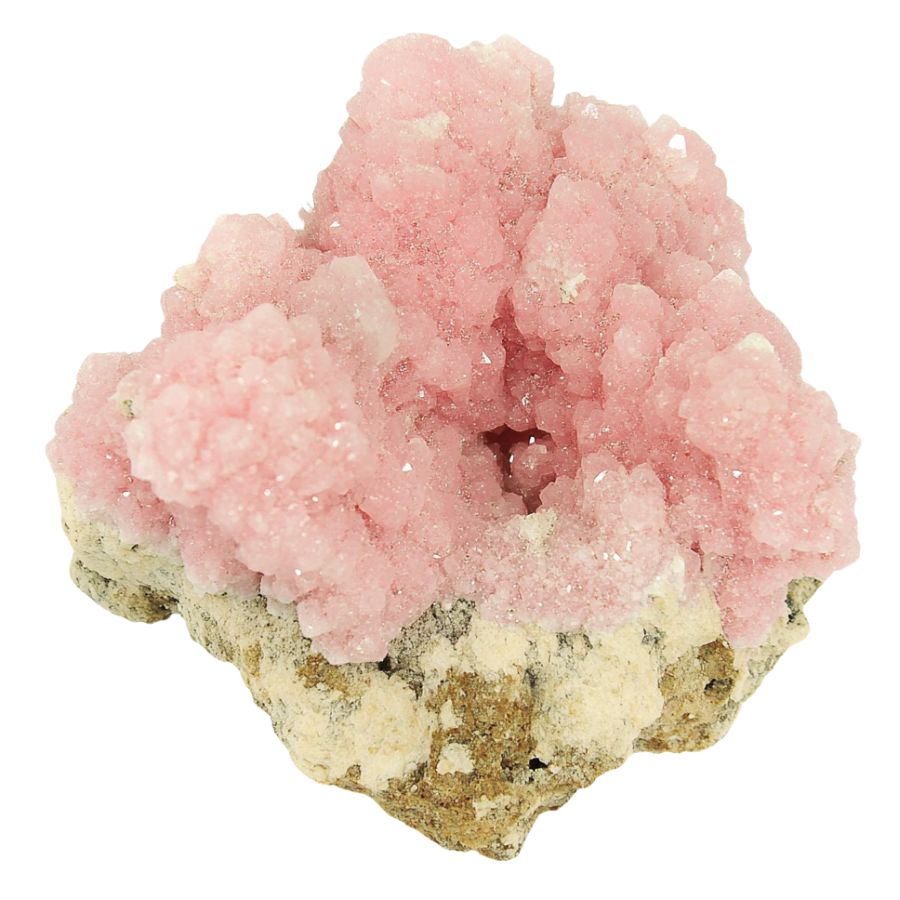
Peruvian Rhodochrosite exhibits a unique blend of pink tones with distinctive crystalline qualities. These stones often develop with exceptional clarity and a glass-like shine.
Crystal formation in these specimens tends to create angular patterns rather than rounded bands. This geometric growth pattern results in fascinating internal architectures that catch and reflect light in unique ways.
The combination of clarity and internal patterns makes these stones particularly fascinating under magnification. Collectors can observe minute details of crystal growth and formation that provide insights into the stone’s development process.
What Rough Rhodochrosite Look Like?
Rhodochrosite in its rough form can be tricky to spot, but once you know what to look for, it’s quite distinctive. Here’s how to recognize Rhodochrosite in its natural state.
Look for the Signature Pink-to-Red Color Range
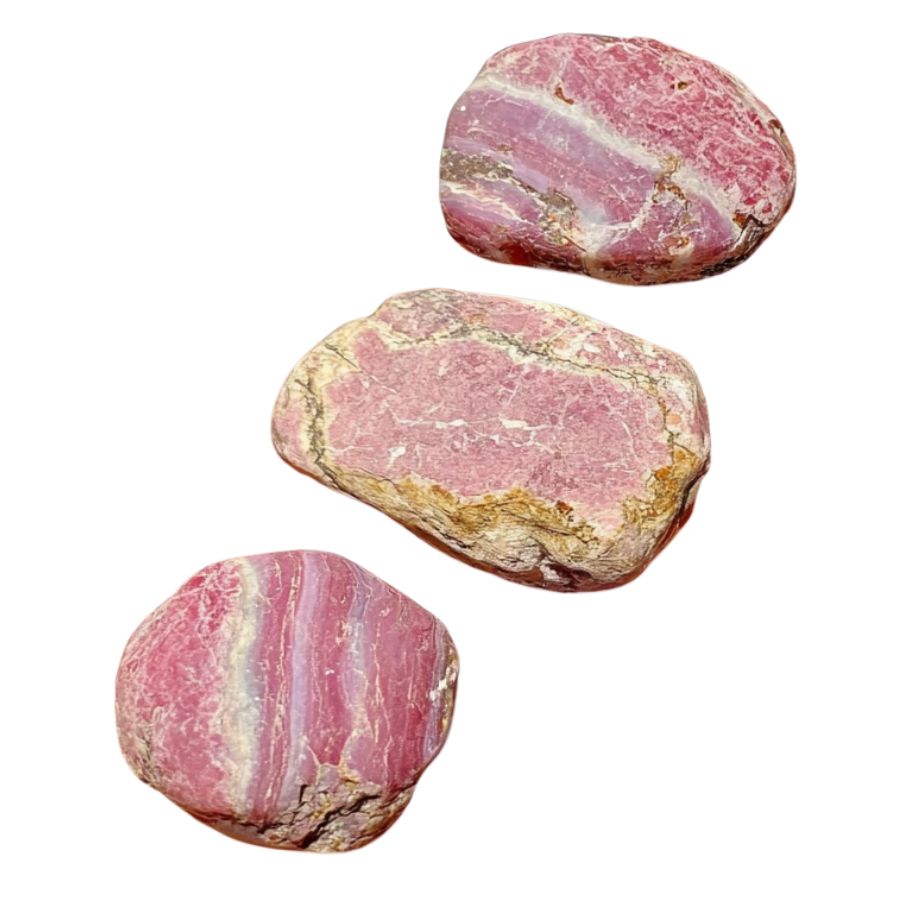
The most obvious telltale sign is its color – typically a warm, rosy pink to deep red. But here’s the thing: it’s not just one solid color. You’ll often spot subtle bands or zones of different pink shades.
Sometimes, you might see hints of brown or even light orange. Don’t dismiss it if it’s not perfectly pink – natural rhodochrosite can be surprisingly varied. The deeper, more saturated reds usually indicate higher-quality specimens.
Check for the Distinctive Crystal Structure
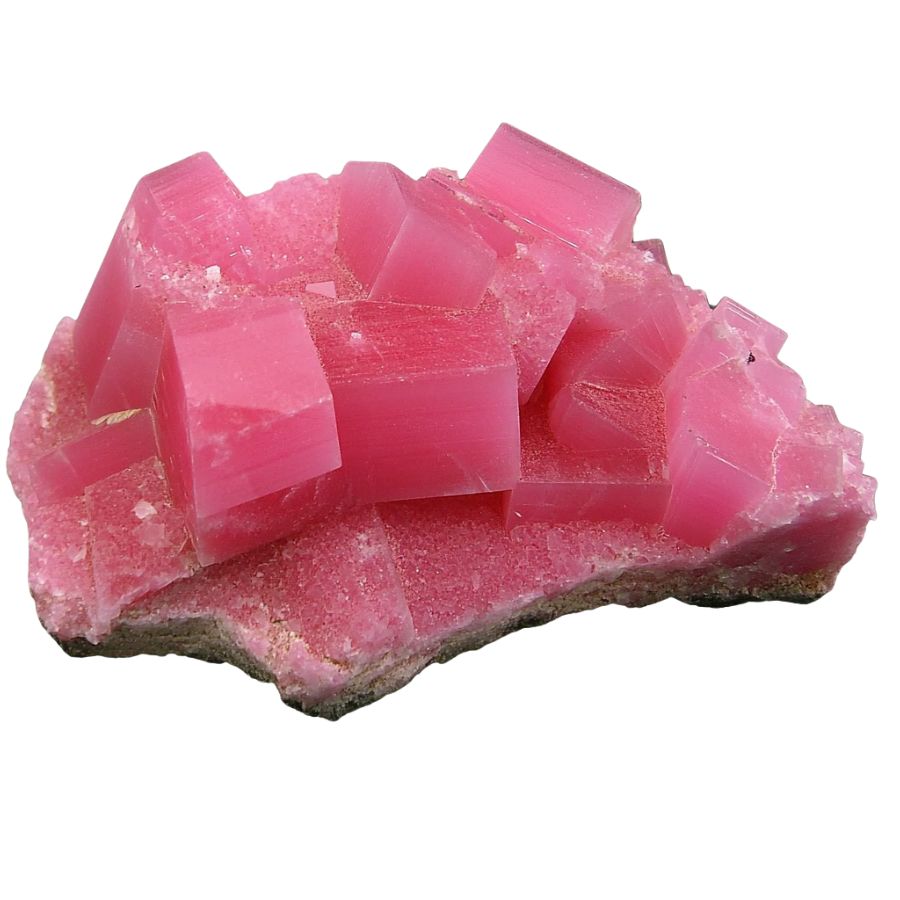
Unlike many minerals, rough rhodochrosite often forms in rhombohedral crystals. Look for angular edges and faces that meet at about 73 degrees. Sometimes you’ll find it in curved, saddle-shaped crystals (super unique!).
The crystals can be transparent to translucent, and they might appear in clusters or as individual specimens.
Examine the Surface Texture and Patterns
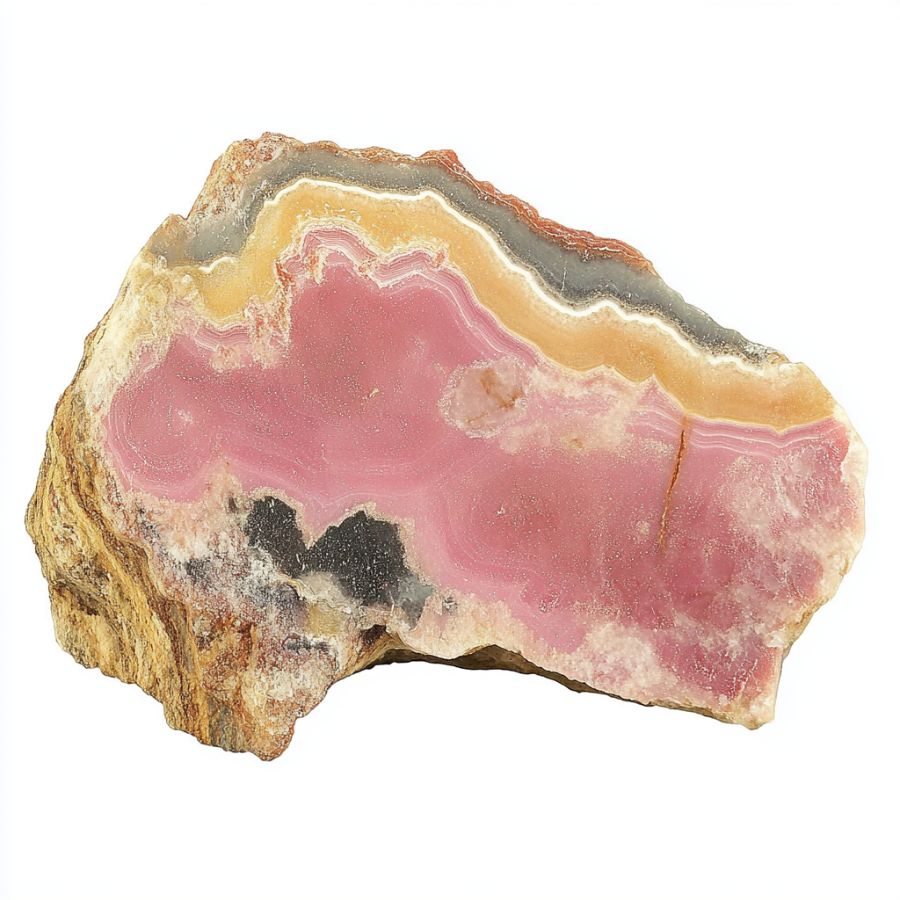
Run your fingers over the surface – rhodochrosite typically has a pearly to vitreous (glass-like) luster. Fresh breaks will show this best.
You might notice concentric banding patterns, especially in massive specimens. These bands often alternate between lighter and darker shades of pink. The surface might feel slightly smooth but not quite as glassy as quartz.
Test the Hardness and Fragility
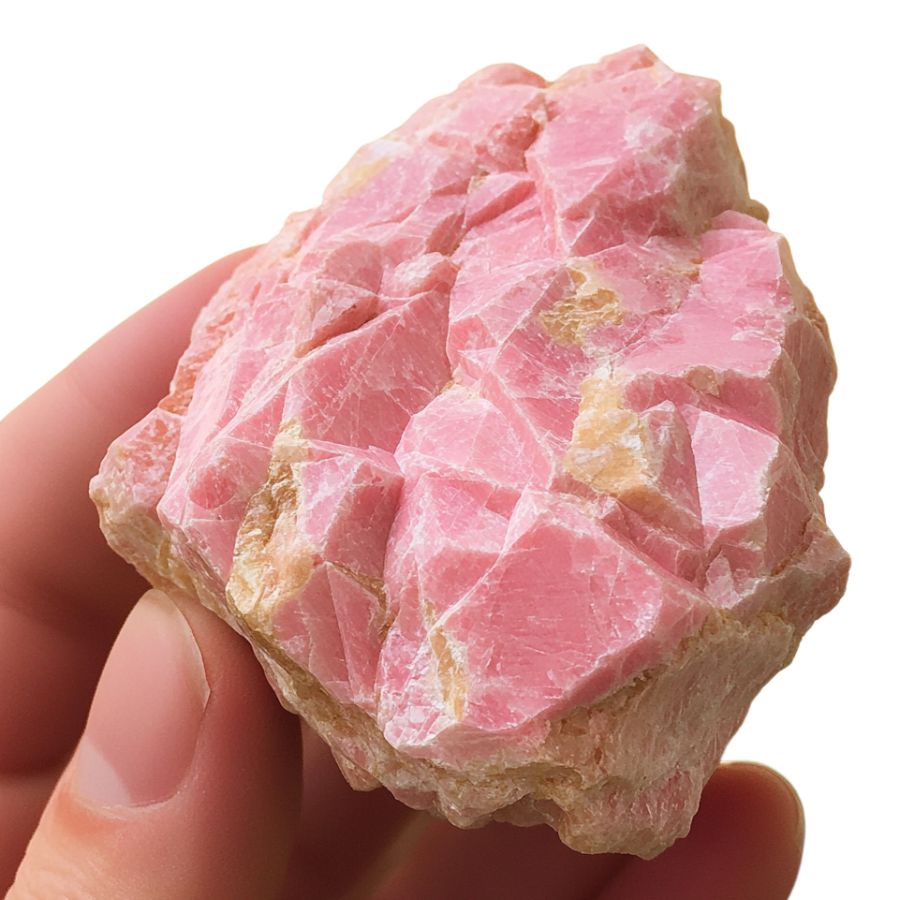
Here’s a crucial tip: rhodochrosite is relatively soft (3.5-4 on the Mohs scale). Try scratching it gently with a copper penny – if it scratches easily, you might have rhodochrosite.
Be gentle though! It’s pretty delicate and can break along cleavage planes. This softness and brittleness help distinguish it from similar-looking minerals like rose quartz, which is much harder.
A Quick Request About Collecting
Always Confirm Access and Collection Rules!
Before heading out to any of the locations on our list you need to confirm access requirements and collection rules for both public and private locations directly with the location. We haven’t personally verified every location and the access requirements and collection rules often change without notice.
Many of the locations we mention will not allow collecting but are still great places for those who love to find beautiful rocks and minerals in the wild without keeping them. We also can’t guarantee you will find anything in these locations since they are constantly changing.
Always get updated information directly from the source ahead of time to ensure responsible rockhounding. If you want even more current options it’s always a good idea to contact local rock and mineral clubs and groups
Tips on Where to Look
Rhodochrosite is a pink to rose-red mineral that often forms in veins and cavities. Here’s where you can typically find this beautiful stone while rockhounding in accessible locations across the US.
Abandoned Mine Areas
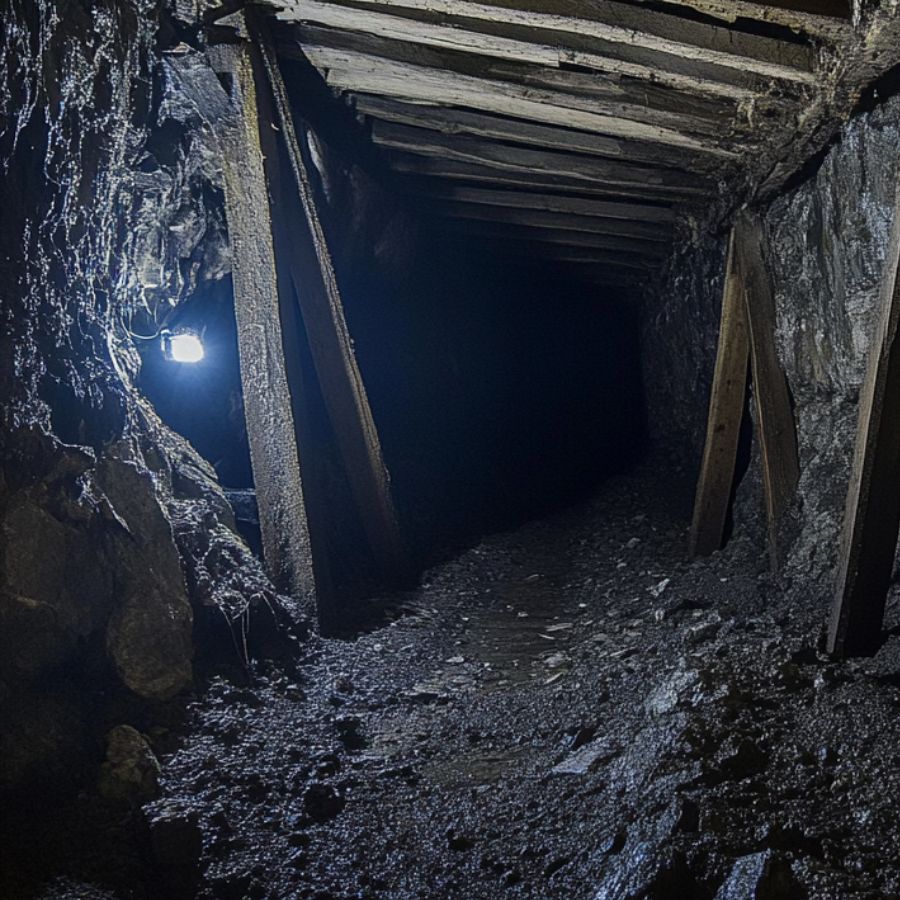
Old mines are great spots to find rhodochrosite. Check the mine dumps and tailings piles where miners discarded unwanted material. These areas often contain smaller pieces that weren’t commercially valuable but are perfect for collectors.
Look for pink-colored rocks in manganese-rich waste piles. The stone frequently appears alongside black manganese minerals, which can serve as a helpful indicator when searching.
Sometimes, you might get lucky and find specimens with beautiful banding patterns that were overlooked during mining operations.
Sedimentary Rock Formations
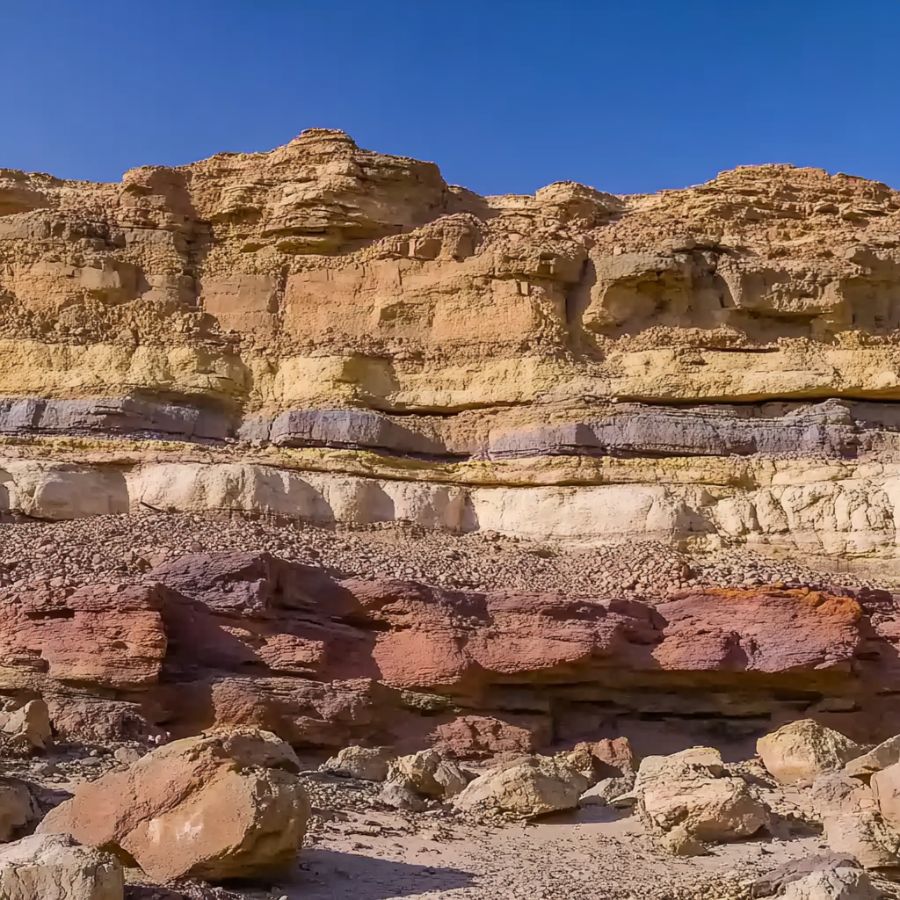
Many sedimentary rocks, especially those containing lots of manganese and calcium carbonate, can host rhodochrosite. Look for areas where limestone and dolomite are common. The stone often forms in the cracks and spaces between these rocks.
While exploring these formations, pay special attention to areas where water has carved out natural exposures, as these spots might reveal hidden rhodochrosite deposits that have been naturally weathered out over time.
Mountain Stream Beds
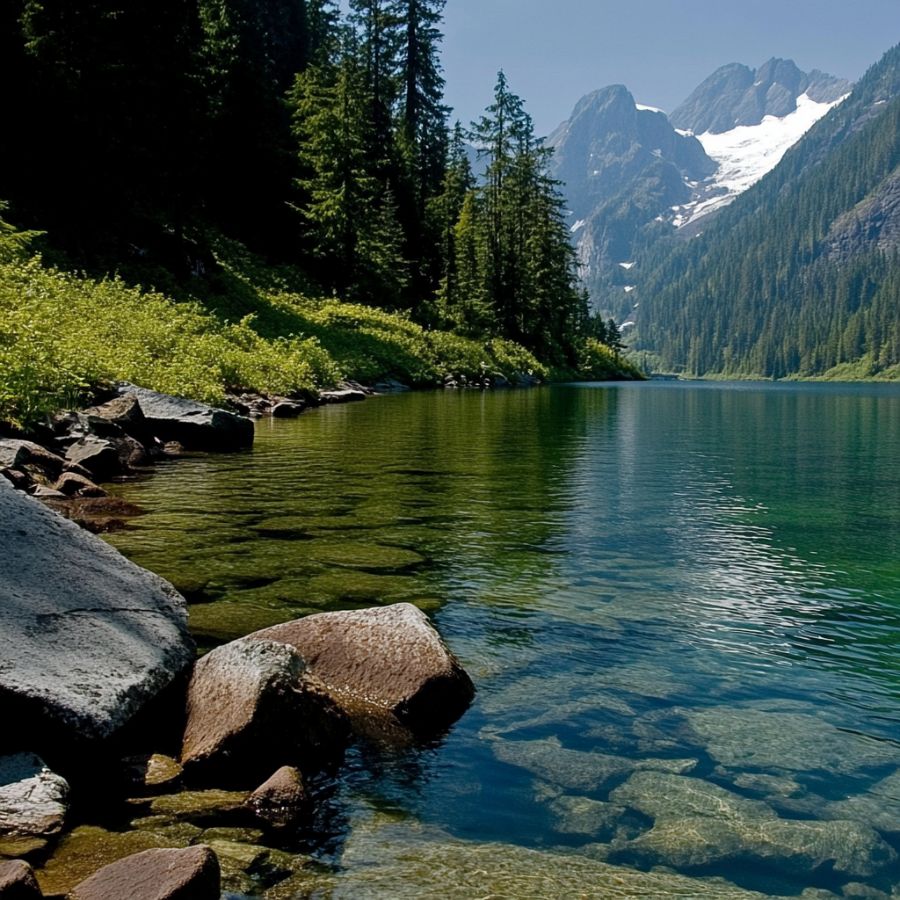
Stream beds in mountainous regions are excellent places to search. Focus on areas where the water has cut through manganese-rich rock formations, as the stream’s natural tumbling action often exposes and smooths rhodochrosite pieces.
During your search, concentrate on spots where the water slows down and creates natural collection points, such as behind large boulders or in quiet pools, because these areas tend to accumulate heavier minerals including rhodochrosite fragments that have broken free from their original source.
Some Great Places To Start
Here are some of the better places in the state to start looking for Rhodochrosite:
Always Confirm Access and Collection Rules!
Before heading out to any of the locations on our list you need to confirm access requirements and collection rules for both public and private locations directly with the location. We haven’t personally verified every location and the access requirements and collection rules often change without notice.
Many of the locations we mention will not allow collecting but are still great places for those who love to find beautiful rocks and minerals in the wild without keeping them. We also can’t guarantee you will find anything in these locations since they are constantly changing.
Always get updated information directly from the source ahead of time to ensure responsible rockhounding. If you want even more current options it’s always a good idea to contact local rock and mineral clubs and groups
Hamilton
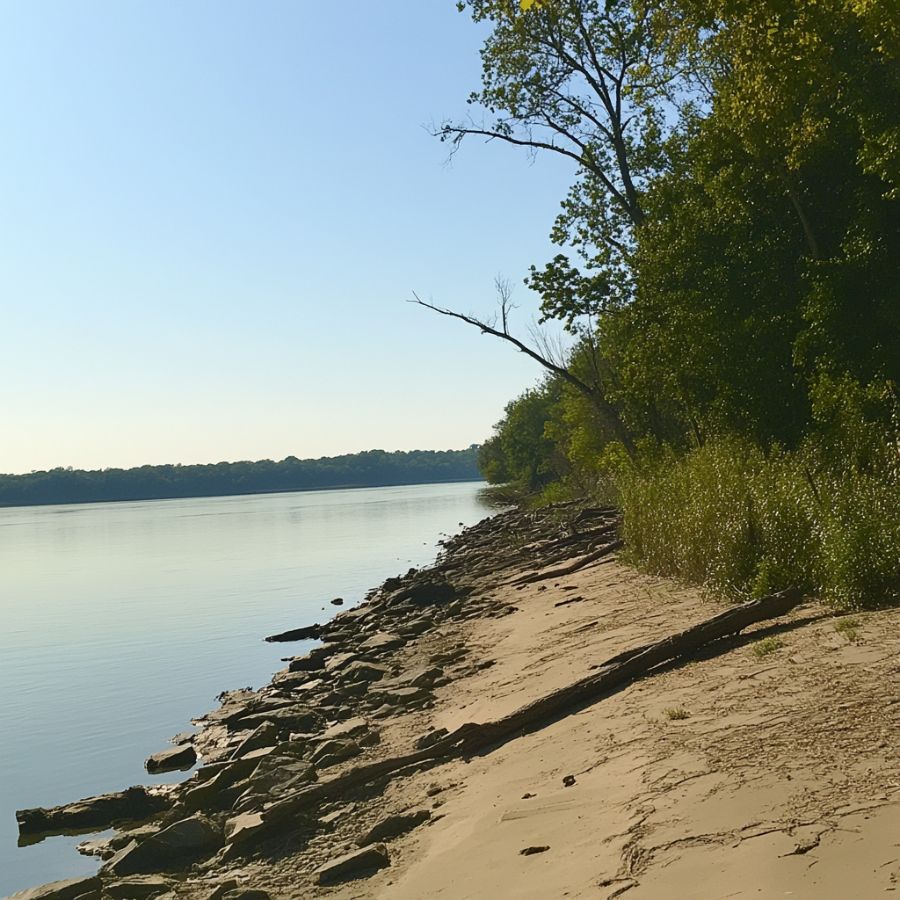
Hamilton is a city in Hancock County. It sits right across the Mississippi River from Keokuk. This area is famous for its geodes; rounded rocks with crystal-filled hollow centers. These geodes form in the Warsaw Formation, a layer of rock from the Mississippian age.
Rhodochrosite can be found in Hamilton, especially at Jacob’s Geode Mine. This pink mineral often appears inside geodes alongside other crystals. A special type called “Ponite” (a variety of rhodochrosite) was first identified at this mine.
Crystal Glen Creek, south of Hamilton, is another good spot to search. After heavy rains, the creek exposes new geodes that might contain rhodochrosite. The best way to find them is to look in freshly eroded creek banks.
Local collectors say spring is the best time to visit after winter freezing and thawing has loosened new specimens.
Sparta
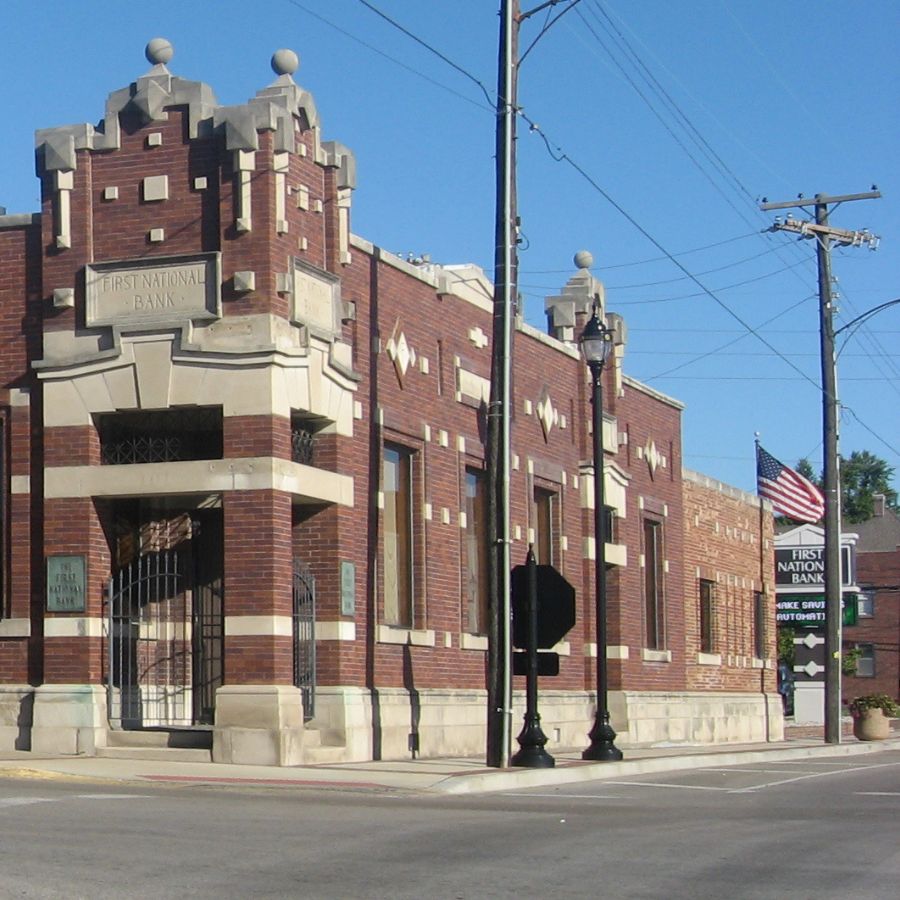
Sparta is a city in Randolph County, about 45 miles southeast of St. Louis. The land around Sparta features gentle hills with heights between 400 and 600 feet above sea level.
This area sits within the Illinois Basin, a large depression filled with layers of sedimentary rocks. The rocks around Sparta formed during the Paleozoic era. These include limestone, shale, and sandstone.
Rhodochrosite appears in the same shale layers associated with coal deposits near Sparta. The old Moffat Mine area has yielded some specimens.
You can check mine tailings (leftover rock piles) from old coal operations. The contrast of pink rhodochrosite against the dark shale makes it easier to spot.
Spillman Creek

Spillman Creek flows through Hancock County in western Illinois. The creek cuts through farmland and wooded areas, creating natural exposures of rock layers. Water erosion constantly reveals fresh material, making it good for mineral hunting.
The creek runs through rocks from the Mississippian period, particularly the Keokuk and Warsaw formations. These rock layers formed about 340 million years ago when this area was covered by an ancient sea. The mix of limestone and shale creates perfect conditions for mineral growth.
Rhodochrosite specimens have been found along the east branch of Spillman Creek, especially south of Pontoosuc. The pink mineral appears in geodes and small veins within the limestone.
Serious collectors visit after heavy rains when creek banks collapse and expose new material. The area where the creek makes sharp bends often traps heavier minerals and rocks.
Fayville
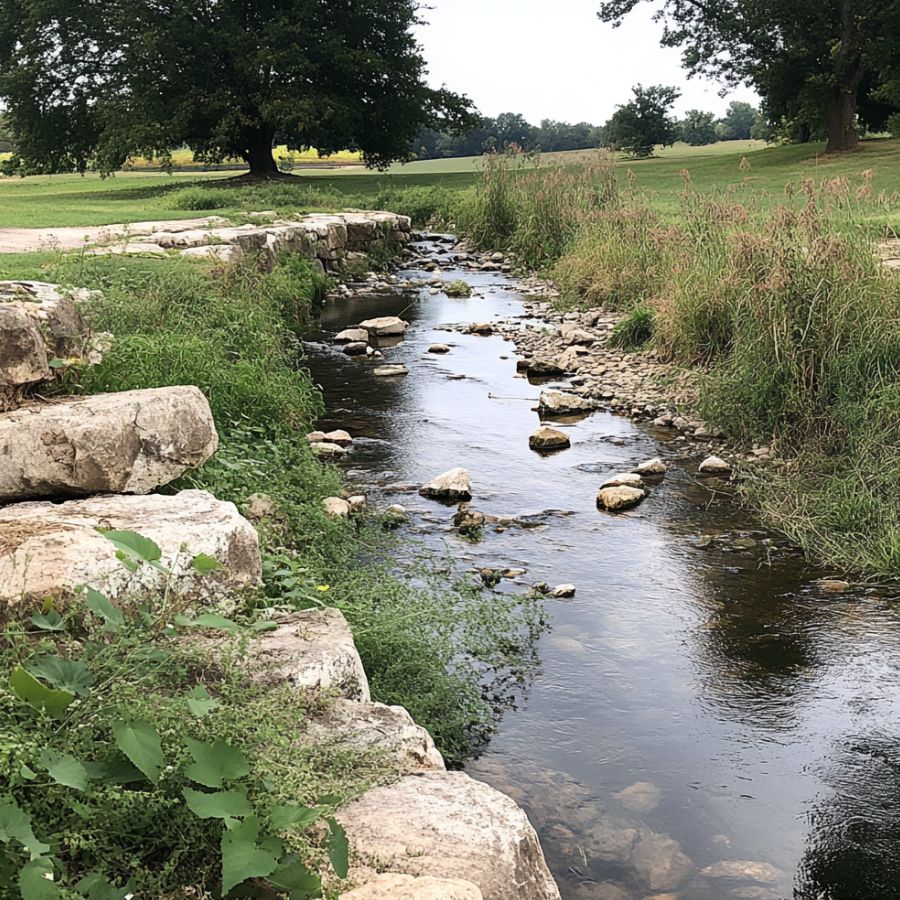
Fayville is a small community in Alexander County. The town sits about 15 miles north of Cairo in a mostly rural setting. The landscape features flat areas created by ancient river deposits.
The geology around Fayville belongs to the Mississippi Embayment, a northward extension of the Gulf Coastal Plain. The rocks here are much younger than in northern Illinois. The McNairy Formation, made of sandstones and clays from the Cretaceous period, dominates the area.
Rhodochrosite appears in Fayville’s stream gravels along with other colorful minerals. The pink mineral comes from older rocks that have been broken down and transported by water. The best hunting spots are where streams slow down and deposit heavier materials.
You can check gravel bars after flood events bring new material downstream. The bright pink color of rhodochrosite stands out against the usual tan and brown gravels.
Small pieces can be found by careful washing and screening of stream sediments. Spring collecting yields the best results when winter rains have refreshed the gravel deposits.
Shawnee Hills
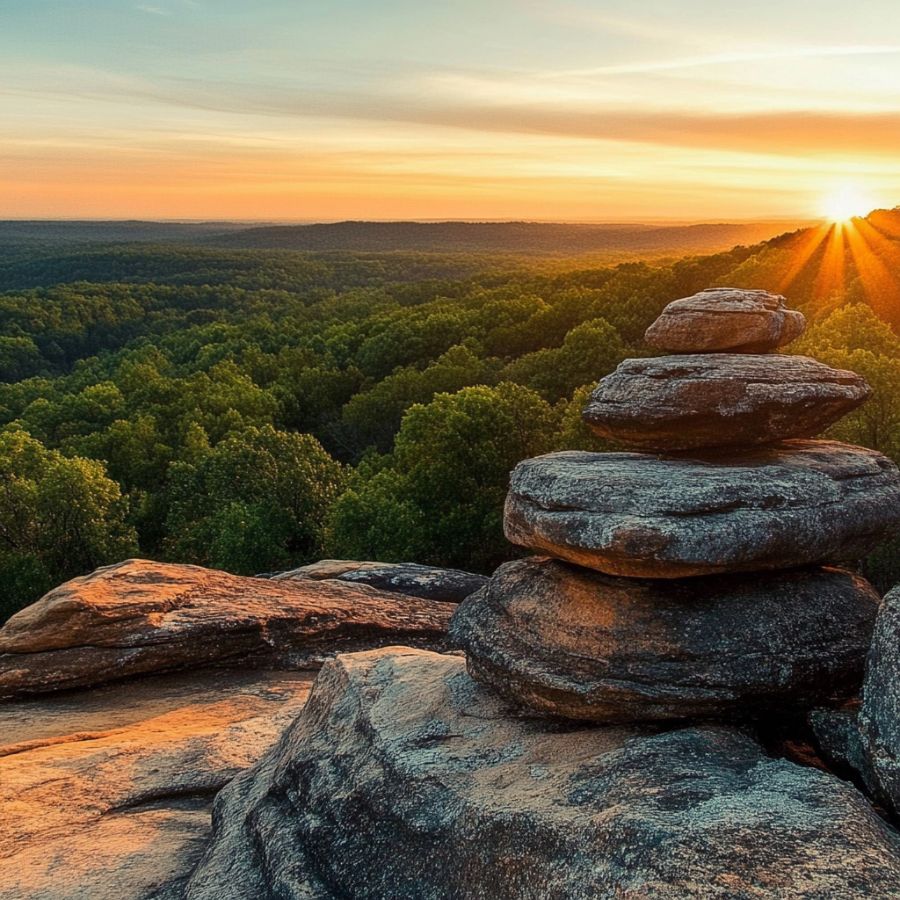
The Shawnee Hills stretch across southern Illinois from the Mississippi River to the Ohio River. This range of hills rises above the surrounding flatlands, creating a distinct region known as the “Illinois Ozarks.” Unlike most of Illinois, glaciers never covered this area during the Ice Age.
Rocks in the Shawnee Hills are mainly hard sandstone with softer shale and siltstone layers. Over millions of years, erosion carved the landscape into rocky bluffs, canyons, and overhangs. The area now contains the Shawnee National Forest.
Rhodochrosite can be found in several locations throughout the hills. The mineral appears most often near old fluorspar mining areas around Rosiclare and Cave-in-Rock. Here, the pink manganese mineral formed in the same veins that produced fluorite.
Hicks Dome in Hardin County offers another hunting ground for rhodochrosite. This unusual geological feature was created by deep underground forces that pushed up and cracked the rock layers. These cracks later filled with minerals.
Places Rhodochrosite has been found by County
After discussing our top picks, we wanted to discuss the other places on our list. Below is a list of the additional locations along with a breakdown of each place by county.
| County | Location |
| Hancock | Nauvoo Stream Gravels |
| Hancock | Tyson Creek Gravels |
| Hancock | Dallas City Gravel Pits |
| Hancock | Crystal Glen Creek |
| Knox | Rapatee Strip Mine |
| Grundy | Coal City Mine Dumps |
| Grundy | East Brooklyn Mine Dumps |
| Henderson | Terre Haute Gravels |
| Alexander | Thebes Mississippi River Gravels |
| Crawford | Palestine Siderite Deposits |
| Edwards | Edwards County Siderite Deposits |
| Perry | McKee Creek Gravels |
| Pope | Old Lead and Fluorspar Mines |

